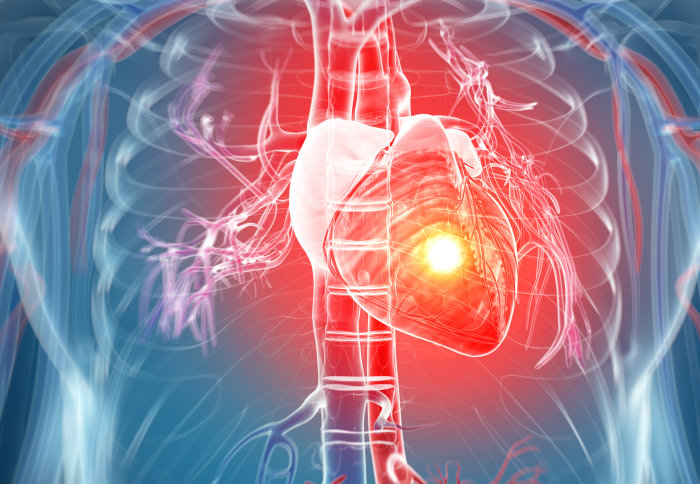Protein can identify heart patients at increased risk of death
by Maxine Myers

A protein linked to heart attacks can identify which patients with an irregular heart beat have an increased risk of death, new research shows.
The study, by researchers from the National Institute of Health Research Health Informatics Collaborative (NIHR-HIC) led by Imperial College Healthcare NHS Trust and Imperial College London, draws on data from more than 3000 patients over seven years.
It found that patients coming into A&E with atrial fibrillation – irregular heart rhythms – who had above normal levels of the protein troponin in their blood were more likely to die than those with normal or low levels of troponin. This remained true even when age and other clinical factors were taken into account.
“ Our results clearly show that even troponin levels that are only just above the upper limits of normal should be taken very seriously in patients presenting with atrial fibrillation.” Amit Kaura National Heart and Lung Institute
Troponin is a protein involved in muscle contraction that is released into the bloodstream after a heart attack. Clinicians use troponin levels, along with other tests, to determine whether a patient is having a heart attack and to decide on treatment options. Patients attending A&E with heart conditions are usually tested for troponin levels, but clinicians rarely act on these results with atrial fibrillation patients unless levels are extremely high.
However, the new study found that, crucially, the risk of death for patients with atrial fibrillation increased even when their troponin levels were only slightly higher than normal.
The study also found that when patients had a coronary angiogram – a specialist X-ray to determine blockages in the blood supply to the heart – their risk of death was substantially lower. However, fewer than half of patients with the highest levels of troponin underwent this procedure.
While the study couldn’t determine why this procedure had such an impact on mortality risk, it is possible that the angiogram enabled clinicians to identify and treat an underlying heart condition.
Amit Kaura, lead author of the research and NIHR Clinical Research Fellow with the National Heart and Lung Institute at Imperial College London, said: “In patients with atrial fibrillation, clinicians currently only act on the results of troponin tests if levels are very high. That’s because, until now, there has been no decisive evidence to link troponin levels in these patients with increased risk of mortality.
“Our results clearly show that even troponin levels that are only just above the upper limits of normal should be taken very seriously in patients presenting with atrial fibrillation. Clinicians should consider using an angiogram to look for underlying coronary artery disease in any patient with atrial fibrillation who has an increased troponin level.”
The study, funded by the NIHR Imperial Biomedical Centre, looked at anonymised data from over 3121 patients who came to A&E primarily for atrial fibrillation at five large hospitals across London and South East England between 2010 and 2017.
The average age of patients was 73 years old and 55 percent of them were men. Sixty percent of patients had troponin levels within the normal range.
Coronary angiograms were performed in less than seven percent of the patients studied. Women were less likely than men to be given an angiogram.
Where patients with elevated troponin levels underwent a coronary angiogram, their risk of death was 36 percent lower.
Amit Kaura said: “Our research found a clear link between troponin and mortality risk in patients with atrial fibrillation and that risk was lower in patients who underwent coronary angiogram. However, an angiogram is just a diagnostic test. We now need a clinical trial to investigate this link further, to see how diagnosing and treating coronary artery disease in patients with atrial fibrillation and elevated troponin can have an impact on mortality risk.”
The data used in the study was gathered through the National Institute for Health Research Health Informatics Collaborative (NIHR-HIC), which involves: Imperial College Healthcare NHS Trust, Oxford University Hospitals NHS Foundation Trust, University College London Hospitals NHS Foundation Trust, King’s College Hospital NHS Foundation Trust and Guy’s and St Thomas’ NHS Foundation Trust.
Article text (excluding photos or graphics) © Imperial College London.
Photos and graphics subject to third party copyright used with permission or © Imperial College London.
Reporter
Maxine Myers
Communications Division